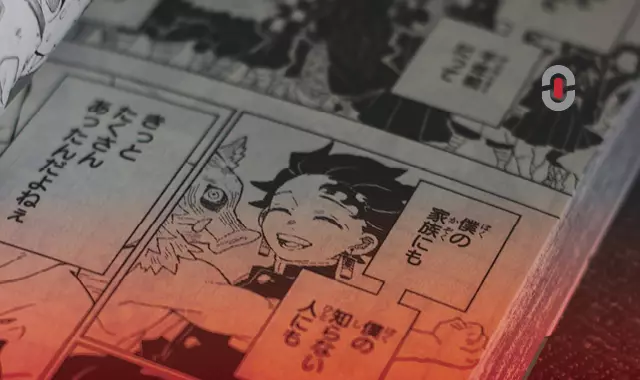Introduction to Manga
Manga is a style of comic books and graphic novels, originating from Japan. The term “manga” refers to both the medium and the artistic form, encompassing everything from single-panel cartoons to extensive series that span multiple volumes.
Most manga conform to a style developed in Japan in the late 19th century and the form has a long history in earlier Japanese art. The roots of manga can be traced back to ancient Japanese art forms such as emakimono (illustrated horizontal narration system of painted handscrolls dating back to the 12th century) and ukiyo-e (woodblock prints and paintings). However, modern manga as we know it began to take shape in the early 20th century. Influences from Western comics and the rise of serialized storytelling in newspapers and magazines helped shape the medium. Post-World War II, manga experienced a significant boom, with artists like Osamu Tezuka (often referred to as the “God of Manga” and the Japanese equivalent to Walt Disney) revolutionizing the art form and laying the groundwork for its contemporary style and narrative structure.
Sound Effects (SFX) in Manga
In manga, sound effects serve multiple purposes beyond the literal representation of sounds. They convey the atmosphere, emphasize actions, express emotions, and even sometimes reflect the internal states of characters. Japanese onomatopoeia (words or the process of creating words that phonetically imitate, resemble, or suggest the sound that they describe) is highly descriptive and often includes sounds that might not be conventionally considered “noises” in English, such as feelings (e.g., “doki-doki” for a heartbeat) or textures (e.g., “zara-zara” for something rough), and one of the hardest for translation – the sound of silence or shiiin – described as very loud silence, or dead silence. Manga translators are definitely one of the most skillful ones out there, for having to deal with many unusual issues.
The two main groups in the classification of Japanese sound-mimicking words are sounds and ideophones (existing mostly in African, Australian, and Amerindian languages; they may include sounds that deviate from the language’s phonological system, imitating—often in a repetitive manner—sounds of movement, animal noises, bodily sounds, noises made by tools or machines, etc; dictionaries of languages like Japanese, Korean, Xhosa, Yoruba, and Zulu have thousands of ideophones)
The sounds may consist of mouth sounds (e.g., “hakushon” – the sound of a sneeze; “haa” – sighs, panting, and other exhalation of breath; “uuu” – the sound of quiet crying; “kyaa” – a high-pitched scream, etc.) and metaphorical sounds (e.g., “bobobo” – sound of fire but not real one – rather a visual representations of someone getting “fired up”).
The ideophones may consist of verb-like Ideophones (e.g., “kurukuru” – spinning around, “yurayura” – swaying, “jii” – stare, etc.) and adjective-like ideophones (e.g., “wakuwaku” – excited, “iraira” – angry, “shiin” – silent, etc.)
The challenges in manga translation are quite big. The common practices in SFX translation are direct translation or substitution, adding an overlaying text or replacing the original SFX, and even adding glossaries and footnotes, if needed, in order to explain everything clearly and to help the cultural adaptation in translation to be more comprehensive.
Visual Identity of Manga
Manga employs a rich array of visual symbols to convey emotions, actions, and abstract concepts concisely and effectively. These symbols, often rooted in different cultural nuances, enhance storytelling by providing readers with quick and intuitive insights into characters’ states of mind and the narrative’s tone. Manga character design is often very expressive – especially the eyes, hair, facial expressions, etc. The narrative techniques may include inner monologues and the already discussed sound effects. Some examples of visual symbols are: sweat drops, blush lines, nosebleed, dark lines on face, crossed plasters, dizzy eyes, lightning bolts, speed lines, and many, many more.
SUCCESSFUL TRANSLATIONS in manga are those that manage to preserve the original tone, humor, cultural context, and emotional impact of the work while making it accessible to a new audience. Here are a few examples of manga series that have been widely recognized for incorporating good translation practices, and for their effectiveness and success in localization:
1. Naruto
English Translator: Mari Morimoto
Original Author: Masashi Kishimoto
Naruto is one of the best-selling manga series of all time, having 250 million copies in circulation worldwide in 47 countries and regions, with 153 million copies in Japan alone and the remaining 97 million copies elsewhere. It tells the story of Naruto Uzumaki, a young ninja who seeks recognition from his peers and dreams of becoming the Hokage, the leader of his village.
For example, many of the jutsu (ninja techniques) names are left in Japanese but are often accompanied by translations or explanations in footnotes. Also, Japanese honorifics like “-san,” “-kun,” “-sensei,” and “-sama” are frequently retained to preserve the nuances of social relationships and respect levels between characters. Whenever it’s possible, sound effects are directly translated into English to convey the same auditory experience. Naruto’s signature phrase “dattebayo” is adapted as “Believe it!” to make it a unique and memorable catchphrase in English, though it has no direct English translation.
2. One Piece
 English Translator: Stephen Paul
English Translator: Stephen Paul
Original Author: Eiichiro Oda
One Piece has received many awards and is ranked by critics, reviewers, and readers as one of the best manga of all time. The story follows the adventures of Monkey D. Luffy, who explores the Grand Line in search of the mythical treasure known as the “One Piece” in order to become the next King of the Pirates.
Many character and place names are retained in their original form to preserve the series’ exotic and fantastical feel. However, some names have been adapted to make them more comprehensible to English readers. The original Japanese sound effects are often kept, with the English translation placed nearby or in small text.
3. Attack on Titan (Shingeki no Kyojin)
English Translator: Ko Ransom
Original Author: Hajime Isayama
By November 2023 Attack on Titan had over 140 million copies in circulation, making it one of the best-selling manga series of all time. The story follows Eren Yeager, who vows to exterminate the Titans after they bring about the destruction of his hometown and the death of his mother.
Because of the rich use of military terminology, the translator pays careful attention to the military jargon and terminology used in the series, ensuring that it is accurate and making sense to the English-speaking readers. Also, some cultural references are explained in footnotes, helping readers understand the context without disrupting the flow of the story.
Conclusion
Localization in manga is, so to speak, a combination of art and science, requiring a deep understanding of both the source and target cultures, as well as the ability to adapt creatively while preserving authenticity. Effective localization bridges cultural gaps, making manga accessible and enjoyable to a global audience without compromising its original essence. As manga continues to captivate readers worldwide, the role of skilled translators becomes ever more crucial, ensuring that these beloved stories can be appreciated across cultures and languages in the future.
